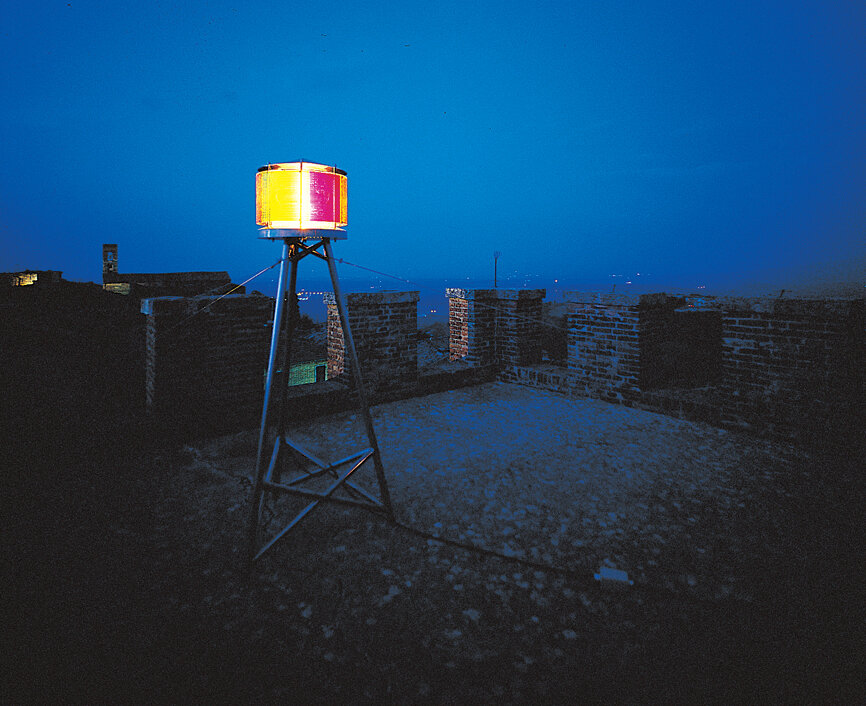“Così tenui, quelle luci colorate davano a chi guardava il paesaggio toscano, bello ma forse abusato dagli occhi di troppi turisti, una nuova e sottile meraviglia.”
— Lettera di Angela Vettese a Florian Metzner, Art to Art IV, 1999

“Così tenui, quelle luci colorate davano a chi guardava il paesaggio toscano, bello ma forse abusato dagli occhi di troppi turisti, una nuova e sottile meraviglia.”
— Lettera di Angela Vettese a Florian Metzner, Art to Art IV, 1999
In occasione della V edizione di Art to Art, i curatori Laura Cherubini e Florian Matzner hanno invitato Olafur Eliasson che ha realizzato un progetto diffuso tra vari borghi della Toscana.
"Olafur Eliasson was struck by the fact that, in central Tuscany, the towns are located on the tops of hills: this makes them both highly visible and places from which one can see far.
The historical needs of territorial defense are combined with the necessity of orientation for travelers, as well as the pleasure of recognizing the landscape before them.
Grasping all of this and combining it with the metaphorical meaning of the lighthouse as a guide for sailors and, more generally, of light as a guide for both individual and collective existence, the artist created five lighthouses which he placed in five villages: the countryside, with its constantly undulating hills, thus resembles a sea that requires points of orientation. On the hilltop of Mensano, in Monteguidi, in Lucciana, in Pievescola, and on the tower of the town hall of Casole d’Elsa, Eliasson placed the lighthouses at the highest point of each village.
During the day, they appear as sculptures, although only the one in Mensano is accessible to the public: it is a tripod topped with a light, which is itself shielded by lenses that enhance its effect and by a ring of colored plastic. At sunset, the lighthouses come to life with intermittent lights; driving along the road that connects one village to another, one can see three, four, or two, depending on the vantage point; the color they display depends on the side from which they are viewed, as the plastic ring changes hue according to the cardinal direction.
Ideally, the landscape should be colored in sections, as shown in a graphic project that the artist drafted on a topographic map. In reality, the lights are rather faint and blend in with street lamps and other nighttime lighting; what sets them apart from those is their intermittence and color.
This unexpected difference does not create a spectacular event, but rather a subtle magic that encourages one to search for them among the “normal” lights as one searches among the stars: somewhat at random, but with a childlike joy when finding the one that was meant to be identified."
Florian Matzner e Angela Vettese, Arte all’Arte IV, 1999
Credits
Olafur Eliasson
Cinque fari per la Toscana (Five lamps for Tuscany)
Casole d’Elsa, Progetto per Arte all’Arte IV
Foto Attilio Maranzano
© Associazione Arte Continua